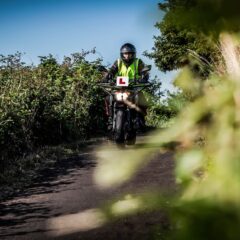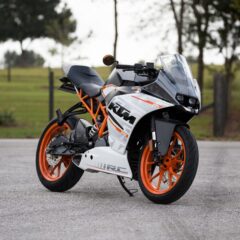
7 Top Motorcycle Accessories
With Christmas just around the corner, you might be wondering what to get your favourite motorcycle enthusiast or even a little something for yoursel...
 Phoenix Motorcycle Training LTD
Phoenix Motorcycle Training LTD
 Phoenix Motorcycle Training LTD
Phoenix Motorcycle Training LTD

Road rules in the Highway Code were updated in January 2023. We think motorcycle rules are better than those for drivers. ANd the recent eight changes to road rules provides more protection to vulnerable road users. That means motorcyclists, cyclists, pedestrians and horse riders should be safer when they travel. But do you know what the changes are? Most people don’t bother re-reading the highway code once they’ve passed their licence.
THINK! The UK’s dedicated road safety organisation, recently relaunched their campaign to improve awareness of the changes. Travel Like You Know Them encourages road users to think of other traffic as people – not vehicles.
Other vehicles are more than just obstacles to avoid as we make our way from A to B. They’re people too. When we remember that the other vehicles on the road carry someone’s mother, father, best mate or neighbour, we’re more likely to create a safer driving experience. That’s good for everybody.
So what are the changes to the Highway Code? Read on for details of the changes…
Some road users are more vulnerable than others. When there’s an accident, some road users – like motorcyclists – bear the brunt of it. Other road users – like lorry drivers – are naturally more protected, thanks to the type of vehicle they’re in.
To recognise this, the Highway Code now includes a hierarchy of road users. Those who have the potential to cause the most harm also have the most responsibility to reduce that risk. That doesn’t mean vulnerable road users can disregard their, or anyone else’s safety. They too have an obligation to take care of their safety and the people around them.
Pedestrians crossing at junctions have the right of way over the traffic. Just like traffic has to give way to pedestrians on zebra crossings, now they must give way at other junctions too. Pedestrians need to look out for traffic and cross where drivers and riders can see them.
Drivers, motorcyclists and cyclists need to remain behind other road users when they’re waiting to turn at a junction – even if they are close to the curb. They should also look out for pedestrians and cyclists coming from either side of zebra and parallel crossings. Of course, they should give way when needed.
New guidance for cyclists encourages them to ride at least half a meter away from the curb. In slow-moving traffic and on quiet roads, cyclists should ride in the middle of their lane. When passing parked cars, they need to leave a door-width distance. When riding in groups, cyclists should ride two abreast.
Cyclists should be aware of other road users, like cars, and allow them to overtake when it’s safe to do so. Motorists and motorcyclists need to leave cyclists at least 1.5 metres of space when they overtake – more when travelling over 30mph. They should do the same when passing people riding horses.
Cyclists moving straight ahead at junctions have the right of way over other road users who are turning right or left. They should check to ensure they can proceed safely and watch for drivers intending to turn as they may not be able to see them.
Other motorists should be particularly careful to check for cyclists and motorcyclists at junctions. Checking mirrors and blindspots carefully and giving way to cyclists and motorcyclists on the inside of the traffic they are crossing.
People cycling or riding horses through roundabouts have the right of way and shouldn’t be overtaken by motorcyclists or other vehicles. What’s more, these smaller road users should be able to move across their path as they move around the roundabout. Drivers should take extra care to ensure they don’t cut across other smaller road users.
Riding a motorcycle in traffic safely means being aware of other road users that are bigger and smaller than you. Understanding the language of the road and communicating successfully with others means remembering that other vehicles contain people just like you, your friends and your family. Updating the Highway Code to support clearer communication between road users and create a mutually cooperative experience for all can only be a good thing.
Having a car door open at the wrong moment can spell disaster for cyclists and motorcyclists. Although it’s common sense to check for other traffic before opening your car door onto the road, not all motorists do 100% of the time.
Rule 239 in the Highway Code suggests opening car doors with the hand furthest from the door. By reaching across yourself to open the door, you’ll naturally check behind you and spot oncoming cyclists, motorcyclists or other motorists. The clause also advises against parking facing oncoming traffic and leaving enough room for Blue Badge holders to access their vehicles.
Bicycle routes shared with pedestrians and horse riders also have new guidance in the Highway Code. People walking should take care not to obstruct cyclists and horse riders. Cyclists and horse riders must take care to provide enough space when passing pedestrians. When needed, they should slow down and let pedestrians know they are behind them.
The changes to the Highway Code are small but effective pointers for improving everyone’s travel experience. When you’re in a rush or heading somewhere new, it’s easy to think of the other traffic around you as annoying obstacles stopping you from getting where you need to go. The THINK! Campaign asking people to Travel Like You Know Them is a great reminder that behind the wheel and handlebars of every vehicle is a person that someone cares about. That simple shift in perspective makes the road a safer and kinder place for everyone.

With Christmas just around the corner, you might be wondering what to get your favourite motorcycle enthusiast or even a little something for yoursel...

If you love motorcycle riding, you’ve probably daydreamed about riding a motorbike for a living. A professional racer or stunt rider is OK for some...

Getting a UK motorcycle licence can seem a complicated process. Particularly when compared to a driving licence for a car. Whether you choose the pro...
This website uses cookies to personalise content, ads, and analyse traffic, sharing data with partners who may combine it with other information. See our Privacy Policy for more information.